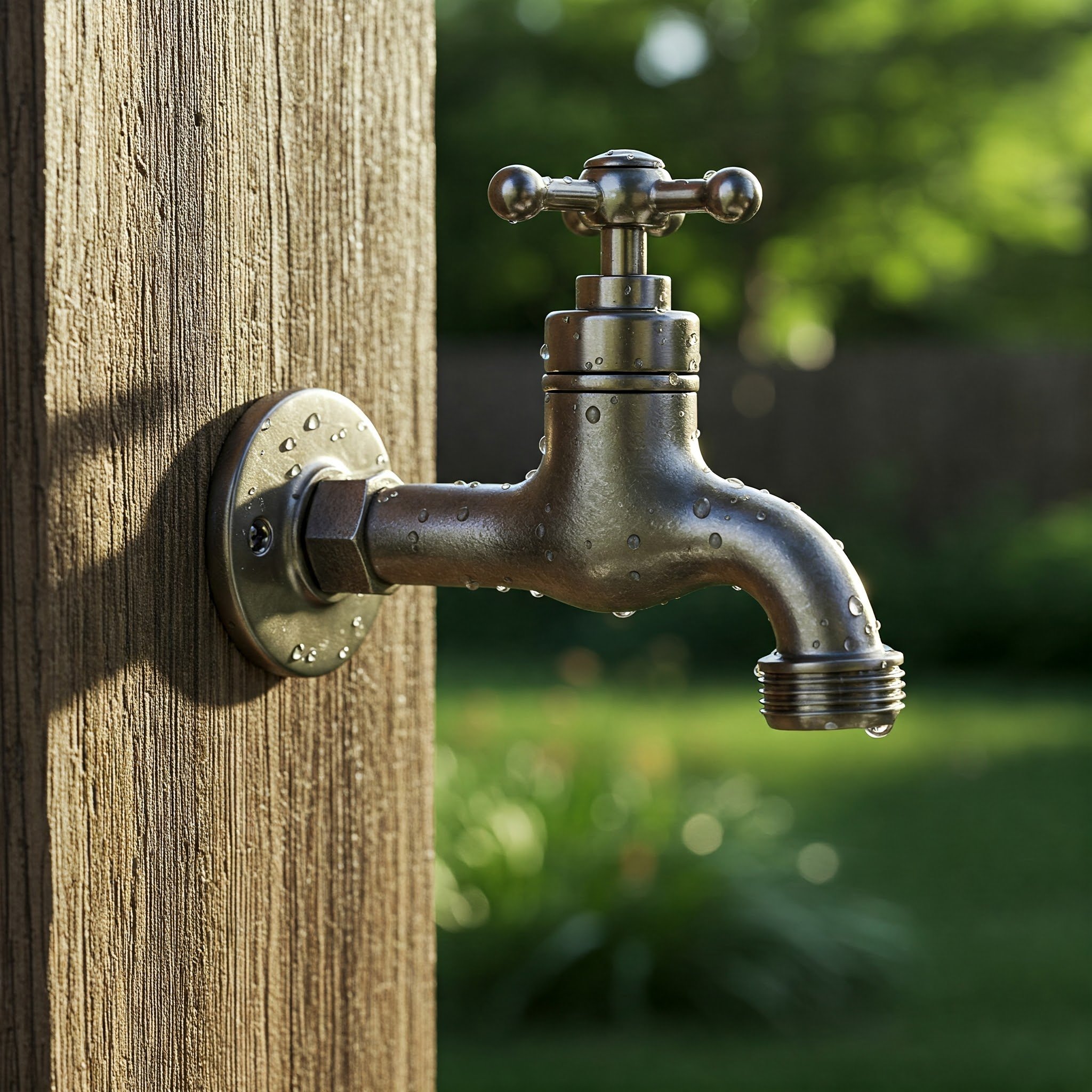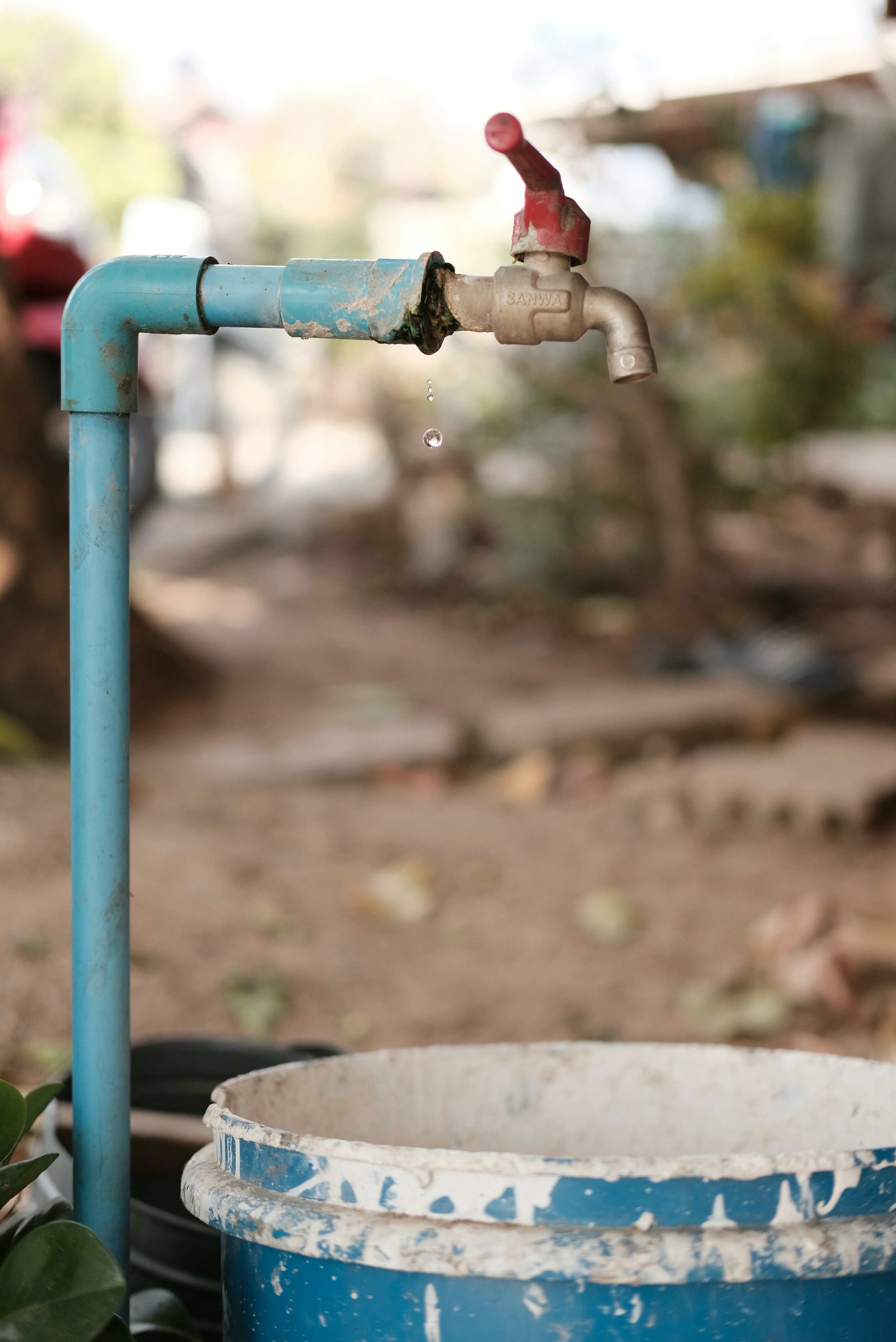Common Types of Outdoor Water Spigots Explained
Discover common types of outdoor water spigots explained in detail. Learn about frost-free, ball valve, and hose bibb options for your home's exterior water needs.
Ever found yourself scratching your head at the hardware store, wondering which outdoor water spigot's gonna work best for your home? You're not alone! When it comes to picking the right outdoor faucet, things can get pretty confusing real quick. Whether you're dealing with freezing winters, planning a garden upgrade, or just need to wash your car without dragging a hose through the house, understanding the common types of outdoor water spigots explained in this guide will save you time, money, and a whole lotta headaches down the road.
Let's face it, nobody wants to deal with burst pipes or a spigot that won't shut off properly when you're trying to enjoy a sunny afternoon. That's why I've put together this comprehensive guide that'll walk you through everything you need to know about outdoor water fixtures. From basic hose bibbs to fancy frost-free models, we'll cover it all in plain English that actually makes sense.
What Makes Outdoor Water Spigots Different?
Before diving into the nitty-gritty of each type, let's talk about what sets outdoor spigots apart from their indoor cousins. Outdoor fixtures gotta be tough cookies! They face rain, snow, blazing sun, and everything Mother Nature throws at 'em. Plus, they need special features to prevent freezing, handle high water pressure, and connect easily to garden hoses.
The main differences you'll notice include:
Thicker brass or galvanized construction
Weather-resistant finishes
Specialized threading for hose connections
Anti-siphon features to prevent contamination
Frost protection mechanisms in colder climates
Common Types of Outdoor Water Spigots Explained in Detail
The Classic Hose Bibb
Ah, the good ol' hose bibb! This traditional outdoor faucet's been around since forever, and there's a reason it's still popular. Simple, reliable, and dirt cheap, hose bibbs are what most folks picture when they think of an outdoor spigot.
These basic fixtures work just like your kitchen faucet but with threads on the spout for attaching a hose. Turn the handle, water flows. Turn it back, water stops. Can't get much simpler than that! However, here's the catch: standard hose bibbs aren't frost-proof, which means you'll need to shut off the water supply and drain 'em before winter hits.
Key features of standard hose bibbs:
Affordable price point (usually $10-30)
Easy installation
Simple operation
Available in various materials
Require winterization in cold climates
Frost-Free Sillcocks: Your Winter Warriors
Now we're talking! Frost-free sillcocks are like the superhero version of regular hose bibbs. These clever devices have a long stem that extends into your home, placing the actual shut-off valve inside where it's warm and cozy. When you turn off a frost-free spigot, the water drains out automatically, leaving nothing to freeze and burst.
Installing one of these bad boys might cost a bit more upfront, but trust me, it's way cheaper than fixing burst pipes! The peace of mind alone makes 'em worth every penny, especially if you live somewhere that gets colder than a penguin's toenails in winter.
Benefits of frost-free sillcocks include:
No winterization needed
Reduced risk of pipe bursts
Available in various lengths (6"-24")
Self-draining design
Long-lasting durability
Ball Valve Spigots: Quick and Easy Control
Ball valve spigots are the speed demons of the outdoor faucet world. Instead of turning a handle multiple times, you just flip a lever quarter-turn, and boom! Full water flow or complete shut-off. These fixtures use a ball with a hole through it that rotates to control water flow.
What's really cool about ball valves is they provide better flow rates than traditional compression valves. Plus, they're less likely to develop leaks over time since there's no washer to wear out. Contractors love 'em because they're reliable and practically maintenance-free.
Anti-Siphon Valve Spigots: Safety First!
Here's where things get a bit technical, but stick with me! Anti-siphon spigots prevent contaminated water from flowing backward into your home's clean water supply. Imagine you've got a hose submerged in a bucket of fertilizer water, and suddenly the water pressure drops. Without an anti-siphon valve, that nasty water could get sucked back into your pipes. Yuck!
Many building codes now require anti-siphon devices on outdoor spigots, and for good reason. They're your first line of defense against water contamination. Some models have built-in vacuum breakers, while others use removable devices you can add to existing spigots.
Yard Hydrants: The Heavy-Duty Option
Got a big property or need water way out in the yard? Yard hydrants are your answer! These standalone fixtures connect to underground water lines and can be installed pretty much anywhere you need 'em. They're especially popular on farms, ranches, and large residential properties.
The beauty of yard hydrants lies in their frost-proof design. The shut-off valve sits below the frost line, and when you lift the handle to turn off the water, it automatically drains. No frozen pipes, no problems! They're built like tanks too, often lasting decades with minimal maintenance.
Features that make yard hydrants special:
Deep burial depth for freeze protection
Self-draining mechanism
Heavy-duty construction
Multiple height options
Can be installed far from buildings
Wall-Mounted vs. Free-Standing Options
When planning your outdoor water access, you've gotta decide between wall-mounted and free-standing options. Wall-mounted spigots attach directly to your home's exterior and connect to indoor plumbing. They're convenient, space-saving, and typically less expensive to install if you've already got pipes in the wall.
Free-standing options, like yard hydrants or hose bib posts, offer more flexibility in placement but require running underground water lines. They're perfect when you need water access away from buildings or want to avoid drilling through walls.
How to Choose the Right Outdoor Water Spigot
Climate Considerations
Living in Minnesota ain't the same as living in Miami when it comes to outdoor plumbing! Your local climate plays a huge role in determining which type of spigot'll work best. Cold climates demand frost-free options, while warmer areas can get away with basic models.
Consider these climate factors:
Average winter temperatures
Frequency of freeze-thaw cycles
Annual rainfall
Humidity levels
Sun exposure
Water Pressure and Flow Requirements
Different spigots handle pressure and flow differently. If you're running sprinklers or filling a pool, you'll want something that delivers high flow rates. Ball valves typically offer the best flow, while traditional compression valves might restrict water movement slightly.
Installation Complexity
Some folks love a good DIY project, while others'd rather leave plumbing to the pros. Standard hose bibbs are pretty straightforward to install if you've got basic skills and tools. Frost-free sillcocks require more work since you're dealing with longer pipes and proper slope for drainage. Yard hydrants? Unless you're comfortable digging trenches and working with underground plumbing, call a professional!
Budget Considerations
Let's talk money! Your budget'll definitely influence which type of spigot you choose. Here's a rough breakdown:
Basic hose bibbs: $10-30
Frost-free sillcocks: $30-100
Ball valve spigots: $20-60
Anti-siphon models: $25-75
Yard hydrants: $100-300 (plus installation)
Remember, though, sometimes spending more upfront saves money later. A burst pipe repair can easily cost hundreds or thousands of dollars!
Maintenance Tips for Outdoor Water Spigots
Regular Inspection and Cleaning
Taking care of your outdoor spigots doesn't require a PhD in plumbing! Simple regular maintenance goes a long way. Check for leaks, corrosion, or damage at least twice a year. Spring and fall inspections work great since you're already doing yard work anyway.
Clean the threads where hoses attach using an old toothbrush and some vinegar if there's mineral buildup. Lubricate moving parts with plumber's grease, not WD-40! Despite what your neighbor says, WD-40 isn't meant for plumbing fixtures and can actually damage rubber seals.
Winterization Procedures
Unless you've got frost-free spigots, winterization's crucial in cold climates. Here's the drill:
Shut off the indoor water supply valve
Open the outdoor spigot fully
Disconnect and drain all hoses
Leave the spigot open through winter
Consider adding an insulated cover for extra protection
Even frost-free models need some TLC. Always disconnect hoses before freezing weather hits! A connected hose prevents proper drainage and can cause even frost-free spigots to freeze and crack.
Common Problems and Solutions
Every spigot develops issues eventually. Here are the usual suspects:
Dripping or leaking: Usually means a worn washer or O-ring. Easy fix for handy homeowners!
Stiff handle: Mineral buildup or lack of lubrication. Clean and grease the stem.
Low water pressure: Could be debris in the screen, partially closed supply valve, or mineral deposits.
Won't shut off completely: Damaged valve seat or worn washer. Might need professional help.
The Environmental Impact of Outdoor Water Usage
Being water-wise isn't just good for your wallet; it's good for the planet too! Modern outdoor spigots often include water-saving features like flow restrictors or automatic shut-offs. Some fancy models even have timers or smart controls you can operate from your phone.
Consider installing a rain barrel system connected to your outdoor spigots for garden watering. It's a great way to reduce water consumption and your utility bills. Plus, plants love rainwater way more than chlorinated tap water!
Future Trends in Outdoor Water Spigot Technology
The plumbing industry ain't stuck in the past! New innovations keep popping up, making outdoor water access more convenient and efficient. Smart spigots with app control, leak detection sensors, and automatic freeze protection are becoming more common and affordable.
Some cutting-edge features to watch for:
WiFi connectivity for remote control
Built-in flow meters to track usage
Automatic shut-off timers
Voice control compatibility
Solar-powered heating elements for freeze protection
Conclusion
Understanding the common types of outdoor water spigots explained in this guide empowers you to make smart choices for your home. Whether you opt for a simple hose bibb or invest in a frost-free yard hydrant, picking the right spigot means years of reliable service and fewer plumbing headaches. Remember to consider your climate, usage needs, and budget when making your selection, and don't skimp on quality when it comes to outdoor plumbing fixtures!
Read next: How to Replace an Outdoor Faucet: Step-by-Step Guide
Frequently Asked Questions
Q1: How often should I replace my outdoor spigot?
A: Quality spigots typically last 15-20 years with proper maintenance.
Q2: Can I install an outdoor spigot myself?
A: Basic models yes, but complex installations need professional plumbers.
Q3: What's the best material for outdoor spigots?
A: Brass resists corrosion best and handles temperature changes well.
Q4: Do all outdoor spigots need vacuum breakers?
A: Many local codes require them to prevent water contamination.
Q5: How deep should yard hydrants be buried?
A: Below the frost line, typically 3-5 feet depending on location.










